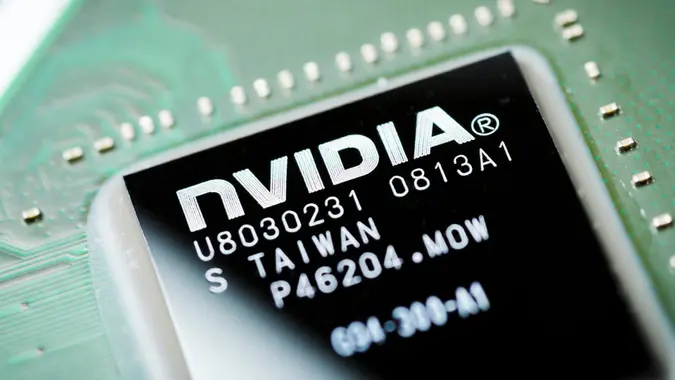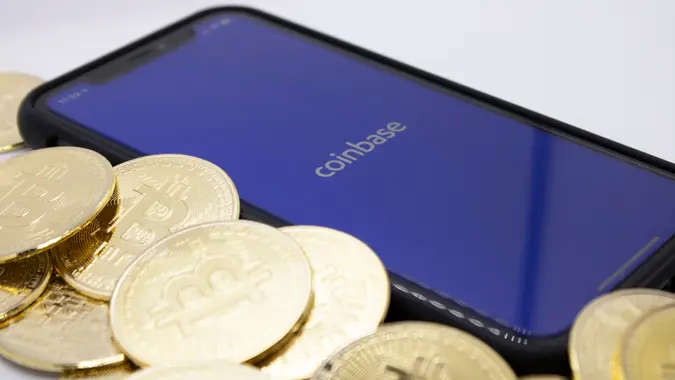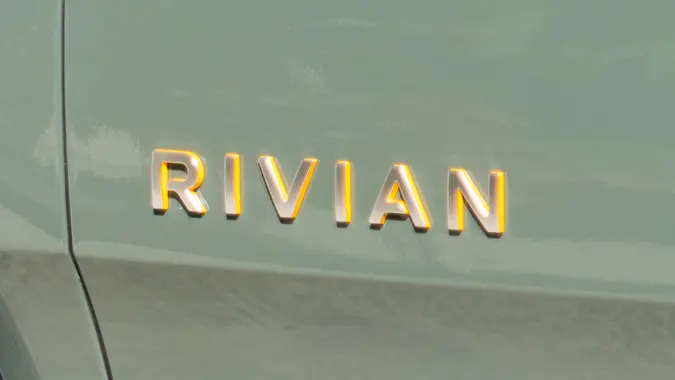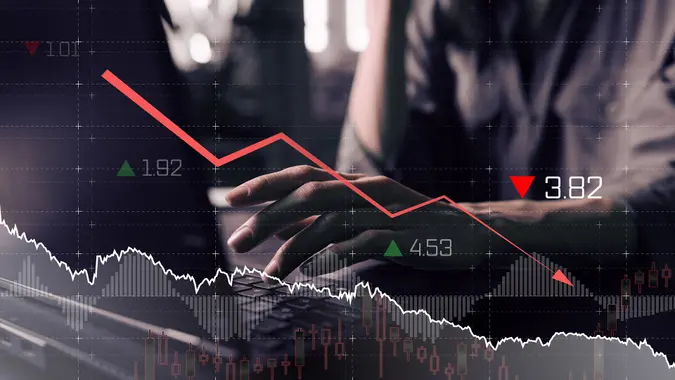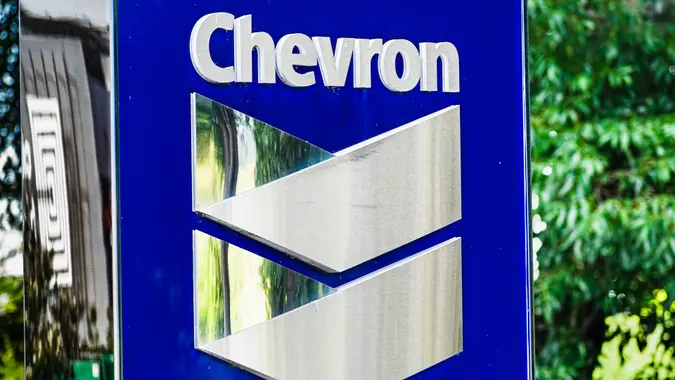10 Best Clean Energy ETFs To Buy Now for 2022

Commitment to Our Readers
GOBankingRates' editorial team is committed to bringing you unbiased reviews and information. We use data-driven methodologies to evaluate financial products and services - our reviews and ratings are not influenced by advertisers. You can read more about our editorial guidelines and our products and services review methodology.

20 Years
Helping You Live Richer

Reviewed
by Experts

Trusted by
Millions of Readers
With the Biden Administration’s emphasis on clean energy initiatives to potentially reduce greenhouse gas emissions by 40% by 2030 and achieve net-zero — carbon neutrality — by 2050, clean energy stocks may seem to be a smart investment.
Clean energy exchange-traded funds (ETFs) offer exposure to a wide range of clean energy stocks without betting it all on one company. ETFs invest in multiple stocks within a single industry, or several related industries, to help you create a diversified portfolio without having to manage a lot of individual investments.
Top Clean Energy ETFs
These 10 clean energy ETFs are worth a look for your portfolio.
iShares Global Clean Energy (ICLN)
- Price: $20.45
- Net Assets: $5.46 billion
The iShares Global Clean Energy ETF is showing less volatility than much of the marketplace right now, trading between $16 and $24 per share for the year. With a low expense ratio of 0.40% and a yield of 1.26%, this stock is widely recognized as the top clean energy ETF of 2022. Some of its holdings include Enphase Energy, Consolidated Edison and SolarEdge Technologies, all clean energy companies on the S&P 500 index.
Invesco WilderHill Clean Energy ETF (PBW)
- Price: $40.25
- Net Assets: $948.36 million
The Invesco WilderHill Clean Energy ETF tracks the WilderHill New Energy Global Innovation Index, with at least 90% of its assets in securities on that index. Heavily weighted toward U.S.-based renewable energy companies, 85% of the fund’s holdings are with U.S.-based companies.
Invesco Global Clean Energy Holdings (PBD)
- Price: $18.92
- Net Assets: $232.48 million
It’s important not to confuse Invesco Global Clean Energy Holdings (PBD) with its counterpart, PBW. Both track the WilderHill Clean Energy Index, but PBD includes includes global companies, with U.S.-based companies making up just under 40% of its holdings and the rest diversified across China, South Korea, Japan, Europe and Canada.
Invesco Solar ETF (TAN)
- Price: $78.42
- Net Assets: $2.86 billion
The Invesco Solar ETF, unlike its clean energy holdings, is a highly focused fund that tracks the performance of stocks on the MAC Global Solar Energy Index. The fund includes top solar companies like Enphase Energy, SolarEdge Technologies and First Solar, making it a good choice if you want to support the growing future of solar power across the continent.
ALPS Clean Energy ETF (ACES)
- Price: $48.66
- Net Assets: $707.91 million
The ALPS Clean Energy ETF tracks the CIBC Atlas Clean Energy Index, focused on U.S. and Canadian companies involved in renewable energy and clean technology. With modest fees of 0.55%, this passively managed fund emphasizes thematic growth in the industry, bolstered by a belief in a sustainable future.
First Trust Global Wind Energy ETF (FAN)
- Price: $17.18
- Net Assets: $283.62 million
First Trust Global Wind Energy ETF is poised to pay a long-term capital gain distribution in December 2022, testament to the growth of wind power and the careful selection of stocks in this index.
The fund includes companies identified as “Pure Play” — directly related to producing wind power — and “Diversified” companies, which are in some way related to the sustainable energy market. That makes this ETF a solid choice, especially if you are interested in supporting the growth of wind power.
First Trust Nasdaq Clean Edge Green Energy Index Fund (QCLN)
- Price: $51.06
- Net Assets: $2.04 billion
The First Trust Nasdaq Clean Edge Green Energy Index Fund tracks companies on the Nasdaq index that are “engaged in manufacturing, development, distribution and installation of clean-energy technologies including, but not limited to, solar photovoltaics, wind power, advanced batteries, fuel cells and electric vehicles.” This makes it one of the more diversified funds on this list, covering virtually every green energy technology.
If you want to support sustainability with a largely U.S.-based fund — 86% of its companies are based in the U.S. — this ETF is one way to do so.
ProShares S&P Kensho Cleantech ETF (CTEX)
- Price: $32.24
- Net Assets: $6.24 million
The ProShares S&P Kensho Cleantech ETF tracks the performance of stocks in the S&P Kensho Cleantech Index. Introduced in September 2021, this ETF showed growth of $10,000 after its IPO and holds net assets of $6.24 million currently, which leaves plenty of room for rebound.
Harbor Energy Transition Strategy ETF (RENW)
- Price: $19.86
- Net Assets: $23.39 million
One of the newer ETFs on this list, the Harbor Energy Transition Strategy ETF, which supports companies devoted to leading the transition to renewable energy, was created in July 2022. It tracks the Quantix Energy Transition Index. Be aware of its relatively high expense ratio of 0.80%.
However, the ETF pays annual dividends and, with a price per share just under $20 — and a range of $18.40 up to nearly $26 over the past 52 weeks — looks to be one of the more stable funds on the list at this time.
Global X Lithium & Battery Tech ETF (LIT)
- Price: $62.18
- Net Assets: $3.93 billion
If you are putting your money on electric vehicles as the future of transportation, you may want to invest in the companies that provide the components to make EVs possible. The Global X Lithium & Battery Tech ETF could grow in value as demand for lithium-ion batteries for electronics and EVs continues to skyrocket.
Is a Clean Energy ETF a Good Investment?
With the growth of renewable energy and clean energy initiatives, clean energy ETFs would seem to be a solid investment choice now and in the future. McKinsey and Company shared that by 2026, global renewable-electricity capacity could grow more than 80% from 2020 levels, with roughly two-thirds of that growth coming from wind and solar.
ETFs make it possible to invest in the whole industry without choosing individual stocks. Keep in mind, Wall Street is still in a bear market, so near-term performance may not represent the value you can ultimately derive from these investments.
In the case of clean energy stocks, it might be wise to embrace Warren Buffett’s philosophy of not buying a stock for 10 minutes if you aren’t willing to hold it for 10 years.
Final Note
Speak to an investment advisor or download a popular investment app, such as Fidelity or Acorns, to diversify your portfolio with clean energy ETFs.
FAQ
Here are the answers to some common questions about clean energy ETFs.- What is the top clean energy ETF?
- The iShares Clean Energy ETF is one of the most highly touted clean energy ETFs available for trading today. It tracks clean energy producers and related companies on the S&P 500.
- Is there a clean energy ETF?
- Many clean energy ETFs are available on major investment platforms and enable you to invest in renewable energy companies, electric vehicle manufacturers and other companies committed to sustainability. Some of the best-known clean energy ETFs include the Invesco Global Clean Energy fund and the iShares Clean Energy ETF.
- What are the best clean energy stocks?
- In addition to investing in managed ETFs, which put your money into a specific basket of stocks related to clean energy, you can also invest in individual clean energy stocks. Some companies to consider might be Enphase Energy, which is also represented in many clean energy ETFs, and EV manufacturers, like Tesla and Rivian.
Information is accurate as of Dec. 21, 2022.
Our in-house research team and on-site financial experts work together to create content that’s accurate, impartial, and up to date. We fact-check every single statistic, quote and fact using trusted primary resources to make sure the information we provide is correct. You can learn more about GOBankingRates’ processes and standards in our editorial policy.
- McKinsey & Company. 2022. "Renewable-energy development in a net-zero world."
- Nasdaq. 2022. "Top Clean Energy ETFs in 2022."
- Yahoo Finance. "Yahoo Finance."
 Written by
Written by  Edited by
Edited by 




